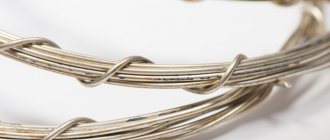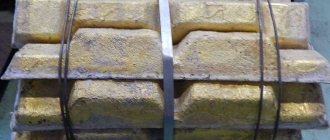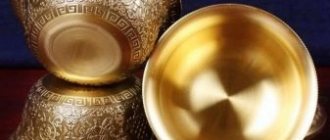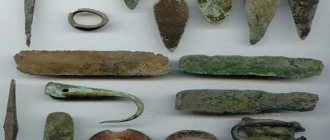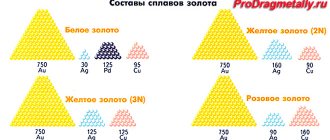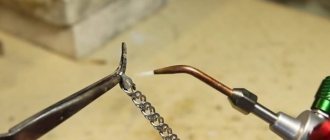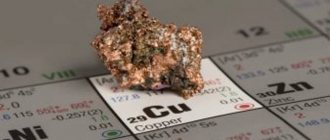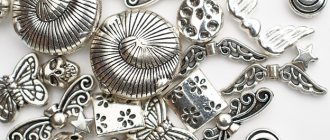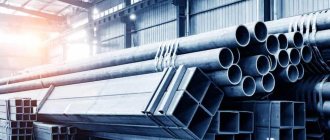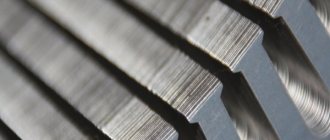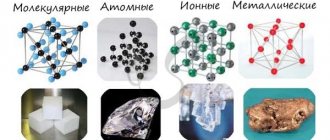Properties
Basic properties of hard alloys: hardness;
heat resistance; strength; wear resistance; However, it is worth understanding that these characteristics depend on the ratio of the elements from which the alloy is made. For example, materials whose names use the combination of letters “BK” are directly dependent on the size of tungsten carbide. As the carbide grain decreases, the alloy becomes harder. At the same time, there is a high probability of reducing its strength. As the grain increases, the reverse process occurs - the strength increases, but the alloy becomes less hard.
Therefore, when purchasing this material, it is important to understand the meaning of the markings, as they directly speak about its properties
Titanium-containing alloys are harder and heat-resistant. Their melting point exceeds 1200°C. In addition, they are less susceptible to oxidation. Among the disadvantages, we can note worse thermal conductivity compared to materials of the “BK” group, as well as weak bending strength. However, this problem is solved by adding tantalum carbide to the composition - alloys marked as “TTK” are much more durable during operation.
Active use in various industries is also facilitated by the fact that solid metals, oddly enough, are very ductile. Therefore, you can work with them at both high and low temperatures.
However, cutting, bending and other mechanical work should be done with great care due to high fragility and low bending strength. When processing a material, it is necessary to know its density, since its strength depends on it
For example, the density of tungsten alloys varies from 14 to 15 g/cm³; titanium-containing – from 9 to 13.5 g/cm³; material with tantalum admixture – from 12 to 13.6 g/cm³.
All of the listed properties determine where and how hard alloys can be used.
Examples of marking of hard alloys
According to the marking principle, hard alloys are divided according to their chemical composition:
- VK - composed of tungsten carbide and cobalt. The number indicates the cobalt content as a percentage. For example, this is an alloy of VK8, VK10, VK6
- TK. Titanium-containing alloys containing titanium carbide, tungsten carbide, cobalt. Designated by letters TK. The number after the letter T indicates the percentage of titanium carbide content, and the number after the letter K indicates the percentage of cobalt content. These are alloys T5K10, T14K8, T15K6, TZ0K4
- TTK. Titanium-tantalum-tungsten. The alloy includes three metals at once: titanium, tungsten and tantalum and cobalt. Marked with the letters TTK. The number after TT, for example “7”, indicates the content of titanium and tantalum carbides, the number after “K”, for example “12” - the percentage of cobalt. Brands TT7K12, TT20K9;
- TN. Tungsten-free. TNM20, TNM25, TNM30.
Soldering and its features
Important! Solder melts at very low temperatures, so all other features must be taken into account.
Wood's alloy is very often used in chemical type operations and in narrow technical fields. However, in most cases it is still used when soldering materials. Melting at low temperatures ensures the use of low-power soldering irons and other equipment. Care should be taken to ensure that overheating does not occur and that the composition remains viscous at all times, because it is in this state that it solders most reliably.
For use when working with small parts, you need to use a flat tool tip to save material consumption. When using a large amount of solder, it is impossible to guarantee a truly stable and high-quality connection, because accuracy is much more required here. Otherwise, it may happen that the soldering area simply blurs, and the extra parts are completely wrong where they should be. Then you will have to use numerous methods to get rid of material from the board. And this will take a huge amount of time and effort. Therefore, it is recommended to use only small proportions at once.
Wood's alloy, regardless of its low melting point, is recommended for use with low-melting materials. The connection will be of higher quality and will also ensure that there are no problems when soldering materials. However, the material is often used for tinning, in which exposure to high temperatures is necessary. The parts adhere much better, and a high-power soldering iron quickly liquefies the alloy.
It is necessary to be careful, speed and accuracy when soldering parts, because the material hardens quite quickly. When applied to the surface, you should not check it later, because the result may turn out to be weaker than expected. Wood's alloy is a fairly fragile material, so it is worth protecting it from physical impact and simply inspecting it visually.
Filmography
Movies
| Year | Russian name | original name | Role | |
| f | Back to the Future 2 | Back To The Future, Part II | boy at the slot machine | |
| tf | Child in the night | Child in the Night | Luke | |
| core | Witness | The Witness | a little boy | |
| f | Avalon | Avalon | Michael Kay | |
| f | Internal investigation | Internal Affairs | Sin Stretch | |
| f | Paradise | Paradise | Willard Young | |
| tf | Day-O | Day-O | Day-O | |
| f | Aspiring upward | Radio Flyer | Mike | |
| f | Forever Young | Forever Young | Nat Cooper | |
| f | Good son | The Good Son | Mark Evans | |
| f | The Adventures of Huck Finn | The Adventures of Huck Finn | Huckleberry Finn | |
| f | War | The War | Stuart 'Stu' Simmons | |
| f | North | North | North | |
| f | Flipper (English)Russian | Flipper | Sandy | |
| tf | Oliver Twist | Oliver Twist | Jack Davkins | |
| f | icy wind | The Ice Storm | Micky Carver | |
| f | Faculty | The Faculty | Casey Connor | |
| f | Collision with the Abyss | Deep Impact | Leo Biderman | |
| f | Black and white | Black and White | Ren | |
| tf | Flight of the Bumblebee | The Bumblebee Flies Anyway | Barney Snow | |
| f | Klutzes | Chain of Fools | Miki | |
| f | Day of repentance | Ash Wednesday | Sean Sullivan | |
| f | Lord of the rings, Brotherhood of the ring | The Lord of the Rings: The Fellowship of the Ring | Frodo Baggins | |
| f | The Lord of the Rings: The Two Towers | The Lord of the Rings: The Two Towers | Frodo Baggins | |
| f | The Adventures of Thumb and Thumbelina | The Adventures of Tom Thumb & Thumbelina | Boy with Thumb (voice) | |
| f | The Lord of the Rings: The Return of the King | The Lord of the Rings: The Return of the King | Frodo Baggins | |
| f | Spy Kids 3: Game Over | Spy Kids 3-D: Game Over | super player (nickname: Warrior) | |
| f | Seventeen year olds | All I Want | Jones Dillon | |
| f | Eternal Sunshine of the Spotless Mind | Eternal Sunshine of the Spotless Mind | Patrick | |
| f | Hooligans | Green Street | Matt Buckner | |
| f | And everything lit up | Everything Is Illuminated | Jonathan Safran Foer | |
| f | Sin City | Sin City | Kevin | |
| f | Bobby | Bobby | William Avery | |
| f | Run away | Happy Feet | Mumble the Penguin (voice) | |
| f | The Legend of Spyro: The Beginning | The Legend of Spyro: A New Beginning | Spyro (voice) | |
| f | Paris, I love you | Paris, je t'aime | passerby, episode with a vampire | |
| f | Day Zero | Day Zero | Aaron Faller | |
| f | Oxford Murders | Los crímenes de Oxford | Martin | |
| f | 9 | Ninth (voice) | ||
| — | With | Wilfred | Wilfred | Ryan Newman |
| f | Romantics | The Romantics | Chip Hayes | |
| f | Happy Feet 2 | Happy Feet Two | Mumble the Penguin (voice) | |
| With | Treasure Island | Treasure Island | Ben Gunn | |
| f | Celeste and Jesse forever | Celeste & Jesse Forever | Scott | |
| f | The Hobbit: An Unexpected Journey | The Hobbit: An Unexpected Journey | Frodo Baggins | |
| f | I'll tear everyone apart! | Revenge for Jolly! | Thomas | |
| With | Red vs Blue | Red vs Blue | Sigma (voice) | |
| f | Maniac | Maniac | Frank Zito | |
| f | Pawn Shop Chronicles | Pawn Shop Chronicles | Johnny Shaw | |
| f | Grand finale | Grand Piano | Tom Selznick | |
| f | Kutis | Cooties | Clint Hudson | |
| With | On the other side of the fence | Over The Garden Wall | Virt (voice) | |
| f | Lighting up the stars | Set Fire To The Stars | John Malcolm Brinnin | |
| f | Open windows | Open Windows | Nick Chambers | |
| f | The Last Witch Hunter | The Last Witch Hunter | Dolan 37th | |
| f | Confidence | Trust | Police officer | |
| f | My angel has black wings | Black Wings Has My Angel | Edd | |
| — | With | Dirk Gently's Holistic Detective Agency | Dirk Gently's Holistic Detective Agency | Todd Brotzman |
| f | I don't feel at home in this world anymore | I Don't Feel at Home in This World Anymore | Tony | |
| f | Go to daddy | Come to Daddy | Norval |
Video clips
- Paula Abdul - Forever Your Girl ()
- The Cranberries - Ridiculous Thoughts ()
- : “Energy” (as director) (2006)
- Greg Laswell: "How the Day Sounds" (2008)
- The Lonely Island - Threw It On The Ground (2009)
- : "Dance Floor" (2010)
- Beastie Boys - Make Some Noise (2011)
- Flying Lotus - Tiny Tortures ()
- Hoy Es Noche de sexo-HD By (2012)
- Aventura-Vegas No Veras-Proekted Ispanol (2016)
A television
- Fraser
- "Guess Who's Coming to Breakfast" (1994) TV Episode (voice) .... Ethane - Adventures in the Book of Valor
- "Responsibility" (1996) TV Episode (voice) .... Iracus - Homicide : Life on the Street
- “The Real Test” (1996) TV Season 5 Episode #8…. Broadman - The Electric Playground
- Episode #7.13 (2002) TV Episode - Saturday Night Live
- Episode #29.8 (2003) TV Episode.... Host - King of the Hill
- "Girl, You'll Be a Giant Soon (2004) TV Episode (voice) .... Jason - The Osbournes
(2004) - TV Episode - MTV Presents: The Next Generation Xbox Revealed
- (2005) .... host - Punk'd
(2006) - One Episode (cameo) - American Dad!
— “Iced, Iced Babies” (2006) TV Episode (voice)…. Ethan - Saving the Species: Saving the Great Penguins
- (2006) .... host - Wilfred
- Ryan
Fees
- In addition to the main fee in the Lord of the Rings trilogy, Elijah Wood received from 435 thousand to 560 thousand dollars for each film as a bonus for the time spent on the set
- Seventeen Years Old (2002) $250,000
- Wilfred (2011) $150,000
Nickel silver: alloy composition, application, characteristics
Professor Wood and his joke with teaspoons
Brass LS59-1: characteristics and alloy composition, GOST
One day Wood invited his friends over for tea. There was nothing unusual about this, but when they started stirring sugar in glasses of hot tea, for some reason everyone’s teaspoons melted. It was a prank Wood had prepared for in advance. The inventor created metal spoons with a low melting point, which was only 68 degrees Celsius. This metal was later named after the physicist - Wood's alloy. These instruments of humor were made from it, which Wood offered to his friends during a tea party. The smell of an aromatic drink filled the room. Everything was conducive to an easy, pleasant conversation and nothing foreshadowed any surprises. Hot tea has a temperature of about 80–90 degrees, which was much higher than the melting point of comic cutlery. That is why the part of the spoon that was immersed in boiling water melted, losing its previous shape, and turned into liquid metal, like mercury. No one could hide their bewilderment - only the surviving piece was left in the hands of the guests who did not understand anything. The pause did not last long, and the friends laughed.
Tea, as it later turned out, turned out to be not so useful. If consumed frequently, it can undermine your health. At the bottom of the cup, after Wood's alloy has liquefied, a reaction with sugar occurs. Gluconates are formed. This is where the common word glitches comes from.
Specialists in the field of metallurgy know that the melting point of an alloy is always lower than the melting point of the components included in its composition. Wood managed to select components that give the minimum melting point: bismuth - 50%, lead - 25%, cadmium - 12.5% and tin - 12.5%. At the same time, the ingredients included in it are relatively refractory: bismuth - 271, lead - 327, cadmium - 321, tin - 232 ° C.
Wood's alloy is used in technological processes, for example, in the production of printed circuit boards for electronic devices. No less popular in technology is the Rose alloy (bismuth - 50%, tin - 25%, lead - 25%), which is slightly inferior to Wood's alloy, but does not contain toxic cadmium. The melting point of the Rose alloy is about 93 °C. Therefore, if the German chemist Valentin Rose decided to make fun of his colleagues in the same way as Wood, nothing would have worked out for him. After all, the melting point of his invention is slightly higher than the temperature of hot tea in a glass, and his friends would have safely stirred the sugar.
Low-temperature alloys are used in sensors of fire safety systems. Such devices have a simple and reliable design. The ends of two flat spring contacts are connected to each other and soldered together with a drop of low-melting solder based on Wood's alloy or Rose's alloy. The sensor is included in the duty device, which monitors the integrity of the electrical circuit. When during a fire the room is heated to the melting temperature of Wood's alloy, the solder melts and the contacts are separated under the action of springing properties. The electrical circuit of the duty device is broken, the fire protection system is activated, including an alarm. Solders having a low melting point are also used in the electronics industry for soldering the leads of integrated circuits that are afraid of overheating, since the melting point. Traditional tin-lead solders are typically 190-240 degrees. The leads of silicon crystals of modern processors are made only with low-melting solders. Modern phones, computers and televisions simply would not have appeared without soldering at low temperatures. It should be said that today scientists have developed a large number of low-temperature alloys, the temperature of which covers a wide range, ranging from +3 to +198 °C. There are also developments whose melting point is below zero and extends to minus 78°C. In total there are over 120 items.
It is worth noting that there is one nuance in the story with teaspoons. The famous Wood's alloy was invented by the English engineer Barnabas Wood in 1860. Biographer W. Seabrook attributes the joke with teaspoons to the American experimental physicist Robert Wood, who was born only in 1868. Historians have not yet resolved this misunderstanding. This story has its own moral - it is not enough to invent something very necessary, you also need to popularize it. A person does not remember physical and chemical properties well, and a funny story is retold by people from distant sciences. We can say that Wood's alloy is the child of two parents who, by coincidence, have the same surnames.
TSV
Alloy of Wood and Rose
We offer high-quality low-melting solders “VUDA” and “ROSE”, which ensures reliable and gentle soldering. The solution is excellent for working with radio components that require gentle temperature conditions, and is also widely used for tinning printed circuit boards in production.
Advantages of low-melting solders:
- Simplicity and ease of use.
- High electrical conductivity, allowing alloys to be effectively used in electronics and electrical engineering to create electrical contact.
- Reliable fastening of metal elements, fairly strong mechanical connection.
- Safety of use for parts.
- Efficient soldering, no peeling of tracks after processing.
- A convenient and universal packaging method is in the form of granules.
Features of WOOD and ROSE alloys.
What connects these two solders is the transition point to the liquid state. For both, it is below the boiling point of water. This determines their scope of application - where it cannot be overheated.
There is also a difference between them - 25 °C. This is not enough. For example, if you solder on one side with a Rose alloy, then on the other side, so as not to unsolder, you can use a lower-melting Wood alloy.
If we talk about “Rose”, then it consists of one part tin, one part lead and two parts bismuth, which gives a melting temperature of +94 ° C. Widely used in radio engineering due to its low T pl. ensures safe work with radio components that are afraid of overheating. When tinning the boards, their durability is achieved; the tracks do not peel off.
Wood's reference has an even lower T pl. compared to Rose, 68.5 °C. Moreover, its composition has the following structure: tin (12.5%), lead (25%), bismuth (50%), cadmium (12.5%). It is widely used in radio electronics and other industries where it is necessary to ensure effective connection of metal elements at low melting temperatures.
Before using any of them, be sure to clean the soldering iron tip from remnants of POS. Moreover, it is advisable to do this by complete stripping and subsequent tinning with the selected low-melting solder. If this is not done, a lumpy mass of variable composition may form in a mixture with POS-61. It is extremely difficult for her to solder. Keeping it clean will always give you great results.
For soldering with low-melting solders, a flux is required, which is selected depending on the surface material. Both products are supplied in granules as they cannot be drawn into wire. They come in a convenient jar with a snap-on lid. Packaging of 10 pieces is made with shrinkage in polyethylene. And of course, everything is put in cardboard boxes.
From us you can always buy low-melting solders in bulk at a factory price. Shipping to other cities and towns is carried out by transport companies.
Literature
- Burton, Tim.
Burton on Burton / Ed. Mark Salisbury. — 2nd ed. - London: Faber & Faber, 2006. - P. 128-144. — 320 p. — ISBN 0-57122-926-3. - Blitz, Michael;
Krasniewicz, Louise. Fear and Loathing // Johnny Depp: A Biography. - Westport, Connecticut: Greenwood Press, 2007. - P. 56-57. — 224 p. — (Greenwood biographies). — ISBN 978-0-313-34300-1. - Hanke, Ken.
Tim Burton: An Unauthorized Biography of the Filmmaker. - Renaissance Books, 2000. - P. 155–182. — 256 p. — ISBN 1-58063-162-2. - McMahan, Alison.
Ed Wood // The Films of Tim Burton: Animating Live Action in Contemporary Hollywood. - New York: Continuum International Publishing Group, 2005. - P. 157-160. — 278 p. — ISBN 0-8264-1567-9. - Page, Edwin.
Ed Wood // Gothic Fantasy: The Films of Tim Burton. - London: Marion Boyars Publishers, 2006. - P. 128-142. — 256 p. — ISBN 0-7145-3132-4.
Characteristics of dore alloy
Titanium alloys.
Titanium alloys are superior to both aluminum and magnesium alloys in terms of tensile strength and elastic modulus. Their density is greater than that of all other light alloys, but in terms of specific strength they are second only to beryllium. With a fairly low content of carbon, oxygen and nitrogen, they are quite plastic. The electrical conductivity and thermal conductivity of titanium alloys are low, they are resistant to wear and abrasion, and their fatigue strength is much higher than that of magnesium alloys. The creep limit of some titanium alloys at moderate stresses (about 90 MPa) remains satisfactory up to about 600 ° C, which is significantly higher than the temperature permissible for both aluminum and magnesium alloys. Titanium alloys are quite resistant to the action of hydroxides, salt solutions, nitric and some other active acids, but not very resistant to the action of hydrohalic, sulfuric and orthophosphoric acids.
Titanium alloys are forged up to temperatures of about 1150° C. They allow electric arc welding in an inert gas atmosphere (argon or helium), spot and roller (seam) welding. They are not very amenable to cutting (seizing of the cutting tool). Melting of titanium alloys must be done in a vacuum or controlled atmosphere to avoid contamination with oxygen or nitrogen impurities that cause embrittlement. Titanium alloys are used in the aviation and space industries for the manufacture of parts operating at elevated temperatures (150–430° C), as well as in some special-purpose chemical apparatus. Light armor for the cockpits of combat aircraft is made from titanium-vanadium alloys. Titanium-aluminum-vanadium alloy is the primary titanium alloy for jet engines and airframes.
In table Table 3 shows the characteristics of special alloys, and table. Figure 4 shows the main elements added to aluminum, magnesium and titanium, indicating the resulting properties.
Structure
What is Wood's alloy from a metallographic point of view? First of all, it should be said that it consists of components that do not actively dissolve in each other at room temperature, and also do not form chemical compounds. What's even more remarkable is that all binary phase diagrams of these components contain eutectics. The structure of Wood's alloy is shown in Figure 4. It represents a typical casting structure: light solid solution dendrites and complex eutectic.
| A | b |
Figure 4. “Fresh” Wood’s alloy (a) and used one after repeated remelting and pouring of thin sections (b).
Brief characteristics of the alloy
Wood's alloy is produced in the form of silver-white round rods or droplet granules. Tensile strength is about 45 MPa, elongation 7%, Brinell hardness 10.5 units, density 9720 kg/m3. The shelf life of alloy ingots is 3 years.
Metallographic studies of the alloy show that the components of which it consists do not dissolve in each other and do not form chemical compounds. The structure of the alloy is eutectic, including light dendrites of the solid solution containing bismuth, and dark complex eutectic (containing all four components).
Areas of copper use
Due to its physical and mechanical properties, it is widely used in various industries. Most often it can be found in the electrical field as a component of an electrical wire. It is also equally popular in the production of heating and cooling systems, electronics and heat exchange systems.
In the construction industry, it is used primarily to create various types of structures that are produced much less in weight than from any other similar materials. It is often used for roofing, as such products are light and flexible. This material is easy to process and allows you to change the profile geometry, which is very convenient.
As mentioned above, it finds its main application in the manufacture of electrical and other conductive cables, where it is used for the manufacture of wire cores and cables. Possessing good electrical conductivity, it provides sufficient resistance to current electrons.
Copper alloys are also widely used, for example, an alloy of copper and gold increases the strength of the latter significantly.
Salt deposits never form on the walls of rolled copper. This quality is useful for transporting liquids and vapors.
Superconductors are made from copper oxides, and in its pure form it is used to make galvanic power supplies.
Galvanic power supply circuit
It is part of bronze, which is resistant to aggressive environments such as sea water. Therefore, it is often used in navigation. Bronze products can also be seen on the facades of houses, as a decorative element, since such an alloy is easy to process, as it is very plastic.
Low melting alloy
Low-melting alloys are used for electrical purposes in fuses, for soldering devices, for soldering glass with metal, in bending operations of thin-walled pipes, for the manufacture of lost wax rods in the manufacture of hollow bodies by electrodeposition.
| Control plug. 1 - boss. 2 - thread 12 threads per 1. 3 - lead-tin alloy. |
The low-melting alloy must have a certificate or be tested in a laboratory before pouring. The study boils down to determining the melting point of a low-melting alloy and checking its chemical composition.
Low-melting alloys with a wide solidification range (non-eutectic) are used as metal putties when it is necessary to attach a metal part to a glass part or vice versa.
Low-melting alloys can be divided into antifriction (babbitt), solders, and printing alloys.
Low-melting alloys, the phase changes of which occur above the curing temperatures of laminates, are usually cast into pre-prepared crust molds or galvanoforms. Other types of molded substrate include thermally conductive plastics and various heat-deformable compatible materials into which heating elements and cooling ducts can be mounted. A completely different type of tooling is laminated plastic molds, which are typically made using very heat-resistant cast or laminated epoxy resins.
Low-melting alloys), including binary (%): 2% A1 (26 5 C), 5% Zn (25 4 C), 8% Sn (20 4 C), 22% In (15 8 C) and ternary, eg It is produced in the form of cylindrical ingots weighing 250 and 500 g in plastic packaging. Superconducting solenoids from vanadium gallide have been created. Gain alloys are used in radiation circuits.
Low-melting alloys can be divided into antifriction (babbitt), solders, and printing alloys.
Low-melting alloys that gallium forms with a number of metals (Sn, Pb, In, T1, etc.) are used in thermostats, sprinkler devices, and as a liquid for high-temperature thermometers and pressure gauges.
The low-melting alloy used for casting also serves as a damper cage. Due to its low resistivity, casting with aluminum has some advantages over casting with a zinc alloy.
Low-fusible alloys are used in electrical fuses and automatic fire extinguishers, which come into action as soon as the temperature in a given part of the room rises to the melting temperature of the low-melting alloy blocking the water exit.
Low-melting alloys are usually alloys of bismuth, tin, cadmium and lead. In some special cases, they may contain mercury.
Low-melting alloys are usually alloys of bismuth, tin, cadmium and lead. In some special cases, mercury may be an integral part of them.
Low-melting alloys are necessary for creating safety systems (low-melting plugs) and can be used as solders.
| General view of the centrifugal tachometer type IO-10. |
Wood alloy buy
Wood's alloy – a heavy and low-melting alloy produced by TINKOM LLC in granules.The melting point of Wood's alloy is 72°C, density is 9720 kg/m³.
Wood's alloy is a combination of tin, lead, bismuth and cadmium in certain proportions.
Wood's alloy composition (ratios may vary slightly, which affects the melting point):
- Tin - 12.5%;
- Lead - 25%;
- Bismuth - 50%;
- Cadmium - 12.5%.
Wood's alloy is used for soldering and tinning when a particularly low melting point of the solder is required.
The main distinguishing feature of Wood's alloy is its fusibility, which ranges from 68 to 90 degrees Celsius, depending on the ratio of elements in the composition.
As a rule, the price of Wood's alloy is somewhat lower, which justifies its widespread use in production, in contrast to more expensive options with similar characteristics.
Wood's alloy for creating fusible electrically conductive elements .
Safety resistive inserts, metal fire alarm sensors and many other products designed for precise response to temperature changes are made from Wood's alloy .
Cadmium imparts fusibility and ductility (but is toxic).
When used in production, cadmium is very toxic, and the maximum permissible concentrations of cadmium and its compounds in air and industrial water should be monitored.
• it is characterized by plasticity and fusibility,
• precision elements can be made from it;
• it can be used to make parts whose functional purpose is to react to temperatures below the ignition temperature of the main structural or finishing materials (wood, pressed cardboard, etc.).
Wood's alloy is used in precision casting, in bending operations of thin-walled pipes, and as lost-melt rods in the manufacture of hollow bodies using the electroforming method.
Wood's alloy is used for the production of precision elements by casting.
Wood's alloy ideally suited for precision casting, the production of hollow bodies directly by electroforming, and is used as a lost wax rod for thin-walled pipes.
Wood's alloy has a tensile strength of 4.5 kgf/mm², a melting point of 65.5 degrees Celsius and a tensile elongation of 7%.
In the warehouse of TINKOM LLC there is always a certain amount of Wood's alloy , which you can buy from us in the shortest possible time at the best price.
purchase Wood alloy by calling the contact numbers during business hours or placing an order on the website.
Preferential discounts are available for bulk purchases of Wood's alloy
Wood alloy sale >>>
Wood alloy buy
Areas of application of low-melting alloys[edit]
In all areas of application of low-melting alloys, without exception, the main properties in demand for the intended use of these alloys are a specified low melting point. The secondary properties in demand in the areas of application of these alloys are a certain density, tensile strength, chemical reactivity, vacuum tightness, and thermal conductivity. From an economic point of view, the cost of the alloy and its density come first. In this or that case of using low-melting alloys, engineering and economic calculations are required for the most optimal solution for the use of the alloy. Economic indicators are especially pronounced in the large-scale consumption of a low-melting alloy of one grade or another. Currently, the main areas of application of low-melting alloys are:
- Production and use of liquid metal coolants in energy and mechanical engineering.
- Foundry (production of lost wax models).
- Fire early warning systems (temperature sensors, fire extinguishing valves, etc.).
- Thermometry (working fluid for thermometers of various types).
- Vacuum technology (seals, soldered seams, etc.).
- Microelectronics (solders, coatings, temperature sensors, fuses, etc.).
- Medicine (bone fixation, prosthetics, etc.).
- Use as a meltable metal lubricant.
Wood's alloy and its positive aspects
1. The lowest melting point of an alloy is less than 100 degrees Celsius. That is why it is perfect for soldering small parts that are very sensitive to high temperatures. Tools for this are suitable even with low power.
2. The composition is more than affordable, therefore it is widespread.
3. Its application in many fields is a necessity.
4. The material has a fairly high density.
Negative aspects of Wood's alloy
- It is not recommended to use at high temperatures, so even at home it is not always suitable for use.
Characteristics
The material is fusible and incredibly plastic. Able to react with almost all metals and surfaces. For its low melting point, compared to other metals, it is considered one of the most dense.
Application of Wood's alloy in sample preparation
For metallographic examination it is necessary to make a thin section, i.e. the surface of the sample, which is viewed through the microscope, must be a mirror. If the sample is large enough, processing it is not a problem. After cutting, it is cleaned on a grinding wheel, then using sandpapers, pastes and finally polished. This results in a mirror surface. But what to do if you need to see, for example, the structure of a wire in cross section, or a thin (several micrometers) layer on a cross-section of a sample, or the structure of a metal powder? You can't just polish it like that. The wire will bend if you apply force during processing, the powder must somehow be converted into a compact material, and the thin layer will “collapse”, i.e. will not be flat, but will turn into a rounded shape and will not be visible through a microscope. This is shown in Figure 1.
Figure 1. Sample edge collapse; 1 - edge of the sample, which is below the focus; 2 - area in focus; 3 - area located above the focus; 2000s
Therefore, the sample area must be artificially increased. To do this, a mandrel (a ring about 1 cm high) is placed on a copper plate, a sample is placed inside it, and the free space is filled with molten Wood’s alloy. Since its melting point is low, the structure of the sample will not change as a result. If the sample is a low-melting alloy, then instead of Wood's alloy, plastics or epoxy resin are used, which harden at room temperature. An example of filling a sample with Wood's alloy and plastic is shown in Figure 2. With this method of preparing a thin section, the edge of the sample will be clearly visible.
| A | b |
Figure 2. Sample embedded in Wood's alloy (a), plastic (b).
A sample made with filling will also be “in sharpness” over the entire surface (Fig. 3).
Figure 3. Sample prepared with Wood's alloy casting (carbon steel, compression plasma treatment); 2000s
Description and features of Wood's solder scrap [Bi? 50%]
Wood's alloy, base - Bismuth. This alloy belongs to the group of low-melting alloys. Wood's melting point is 68 degrees Celsius. An interesting feature of the Rose and Wood alloy is that, relative to the metals of which they are composed, these alloys melt at fairly low temperatures. Those. these alloys will melt easily in hot tea. And this despite the fact that the average melting point of the individual metals that make up the alloy of Rose and Wood melts at a temperature of 300 degrees Celsius. The content of the main element (metallic Bismuth) in the alloy is 50%.
Wood's alloy consists of an alloy of metals such as bismuth-lead-cadmium-tin. Due to the content of metal cadmium in Wood's alloy, this alloy is considered extremely harmful and dangerous. Just 1 minute of inhaling cadmium vapor can cause death in humans. The lead content in the alloy is 25%, cadmium 12.5%, tin 12.5%. This alloy, like the Rose alloy, is mainly used in radio electronics. When working with Vuda, all safety regulations must be followed. Due to the fact that people work directly with this alloy, the room and especially the workplace must be well ventilated.
Flaws
- It cannot withstand high temperature loads, due to which its scope of application is limited even in domestic conditions;
- During operation, it turns out to be very sensitive to mechanical loads, so even small impacts can crack.
Wood's alloy composition
The uniqueness of this material lies in its composition. Here you need not only the exact presence of certain elements, but also the ratio of their content. The exact and most effective composition of Wood's alloy is as follows:
| Chemical element | Composition ratio, % |
| Bismuth | 50 |
| Lead | 20 |
| Cadmium | 12,5 |
| Tin | 12,5 |
Specifications of Wood's alloy
The main property of the material is its fusibility under almost any conditions, as well as fairly good ductility. It can interact with almost any metal surface. The deposited metal has a fairly high density when compared with other solders with a low melting point. The exact characteristics of the material are as follows:
| Parameter | Units | Meaning |
| Melting temperature | Degrees Celsius | 72 |
| Density | kg/m2 | 9720 |
Soldering Features
"Important!
The melting point of solder is very low, which leads to many other features."
Wood's alloy is used in a narrow technical field and in chemical operations. But most often it is used as solder. Low temperatures suggest that you need to use weak soldering irons so that no overheating occurs and the composition retains its viscosity in the molten state, since this is the best state for soldering.
When working with small parts, you should use a thin, flat tip of the tool so as not to use too much consumables. Using a lot of solder will not necessarily make a good connection, as accuracy is more important here. Otherwise, it may turn out that the soldering area has blurred, and excess drops have landed on those parts of the circuit where they should not be. Then you will need to look for a way to remove solder from the board. Thus, it is better to immediately take minimal portions.
Despite the low melting point, Wood's alloy is preferably used with fluxes that are suitable for all low-melting materials. This will improve the quality of the connection and eliminate even the minimal risk of problems during soldering. But sometimes the material itself is used for tinning when working with high-temperature solders. Thanks to it, the adhesion of other materials improves, and a powerful soldering iron will quickly turn the alloy into a liquid state.
Movements must be as clear and fast as possible, since during use the material begins to quickly harden. After application to the surface, you should not subject it to rigorous checks, as there is a high risk of damaging the solidified solder, even if the connection is made well. Wood's alloy turns out to be quite fragile, so it is quite enough to carry out visual quality control and not expose the deposited metal to great dangers.
Is it possible to solder and tin with Rose?
The alloy is suitable for desoldering parts from a board, but in no case for final soldering of parts onto a board because of its fragility. Rose alloy is very fragile, the connections are unreliable. This is especially true for connectors and wires. When electrical current flows through the board or wires, heat is generated.
Because of this, the low-temperature alloy begins to melt. In addition, it does not tolerate vibration or mechanical shock. Microcracks appear, oxides occur and loss of connection occurs.
Tinning with Rose alloy
Radio amateurs have a popular “lazy” way of tinning boards using Slava Rose. To do this, several granules of low-temperature alloy and boards that need to be tinned are added to a boiling pan with a pinch of citric acid. The solder is distributed evenly in a matter of seconds. The main disadvantages of this tinning method are the toxicity and the same fragility of the alloy.
A significant drawback is fragility and toxicity. It is because of this that you should not solder parts with such an alloy.
Precautionary measures
Since the materials used are toxic, it is imperative to solder in a ventilated area and use protective equipment.
During soldering work, you need to keep your distance and wear safety glasses. Molten drops of metal can get on the skin or mucous membranes, thereby causing burns and infection.
Take the granules themselves only with tweezers, avoiding contact. They are not that toxic, but it greatly reduces its impact.
The alloy and its particles should not be allowed to come into contact with open wounds.
Refractoriness of metals
All engineers and designers working in mechanical engineering pay attention to this characteristic. Depending on the value of this characteristic, a person can calculate and determine in which design certain refractory materials can be used
Materials whose melting point is higher than the melting point of iron, equal to 1539 ° C, are called refractory. The most refractory materials:
The full list contains more chemical elements, but not all of them are widely used in production and some have lower melting points or are radioactive.
Tungsten is the most refractory metal. It looks light gray in color and is quite hard and heavy. However, it becomes brittle at low temperatures and is easy to break (cold brittleness). If you heat tungsten above 400 °C, it will become ductile. Tungsten does not combine well with other substances. It is extracted from complex and rare ore minerals, such as:
Ore processing is a very complex and expensive process. The extracted material is formed into bars or finished parts.
Tungsten was discovered in the 18th century, but for a long time there were no furnaces capable of heating to the melting point of this refractory metal. Scientists have conducted many studies and confirmed that tungsten is the most refractory metal. It is worth noting that according to one of the theories, seaborgium has a high melting point, but it is not possible to conduct a sufficient number of studies, because it is radioactive and unstable.
Adding tungsten to steel increases its hardness, so it began to be used in the manufacture of cutting tools, which increased cutting speed and thereby led to an increase in production.
The high cost and difficulty of processing this refractory metal affect its areas of application. It is used in cases where it is not possible to use another. Its advantages:
- resistant to high temperatures;
- increased hardness;
- durable or resilient at certain temperatures;
Metal ore processing
All these characteristics help tungsten find wide application in various fields, such as:
- metallurgy, for alloy steels;
- electrical engineering, for filaments, electrodes, etc.;
- mechanical engineering, in the manufacture of gear units and shafts, gearboxes and much more;
- aviation production, in the manufacture of engines;
- space industry, used in rocket nozzles and jet engines;
- military-industrial complex, for armor-piercing shells and cartridges, armor of military equipment, in the design of torpedoes and grenades;
- chemical industry, tungsten has good corrosion resistance to acids, which is why filter meshes are made from it. In addition, compounds with tungsten are used as fabric dyes, in the production of clothing for firefighters, and much more.
Such a list of industries where this refractory metal is used suggests that its importance for humanity is very great. Every year, tens of thousands of tons of pure tungsten are produced around the world, and every year the demand for it grows.
Wood's alloy granules
History of origin and main characteristics
In 1868, Robert Williams Wood experimentally obtained an alloy that, when heated strongly, practically does not decrease in volume.
This element was subsequently named after its inventor - Wood's alloy. Some sources list Barabas Wood as the inventor, but in fact he created an alloy with a slightly different chemical composition. Because of the same surname, sometimes the names of the creators are simply confused. At the moment, the scope of application of the alloy is quite wide, but first it is worth considering the main characteristics of this alloy.
Melting point is 66-70C
Chemical composition: Wood's alloy contains 50% Bismuth, 25% Tin, 12.5% Lead and 12.5 Cadmium
Main application: Making impressions and placing them in fuses on safety devices.
Characteristics of GOST TU 6-09-4065-87
Brand (official name) - Wood Alloy
Price: 2200 rub/kg
Unit: kg
Dimensions Type of delivery: granules.
From these characteristics it can be seen that Wood's alloy is widely used in soldering copper and tin. Since its main use is in fuses on safety devices, it is easy to guess that when exposed to high temperatures, as well as the negative influence of other factors, this alloy retains its qualities.
Areas of application of Wood's alloy
The form of alloy production is granules, pigs or ingots. In other words, the packaging is quite convenient for both small and large orders. Full compliance of Wood's alloy with state standards allows it to be widely used in any industry. Moreover, due to its characteristics, it can be used for soldering parts such as fuses or other safety connection devices.
Since the melting point of the alloy is quite low (60 degrees is not much), it is widely used in the repair of thin-walled metal pipes. In particular, it can be used to install individual communications at any angle (connect several pipes). Of course, for example, it is not suitable for organizing a hot water supply system, but for cold water it is one of the best options for an auxiliary element during installation.
Price of Wood's alloy in granules and precautions when using it
The price of Wood's alloy varies slightly, depending on whether it is purchased wholesale or retail. It is more profitable for large enterprises to buy it in bulk. This will allow you not only to save on supplies, but also to always have reserves of the alloy at your enterprise. Retail purchase is more suitable for small businesses and individuals (after all, Wood's alloy can be used both on an industrial scale and in the domestic sphere).
Separately, it is necessary to note the condition for the safe use of the alloy. Since it contains cadmium, contact of the alloy with the skin is undesirable. This is explained by the fact that cadmium is a toxic substance, so it is advisable to use gloves or other protective equipment when using the alloy.
Production and Application
Solder is produced by melting all components in electric furnaces. The crushed metal is placed in crucibles, heated and mixed. The semi-solidified alloy is then poured into ingot molds or rolled into a rod. To obtain granules, the melt is poured into water.
The main areas of application of the alloy at home:
- soldering of heat-sensitive parts;
- desoldering various components from finished boards during repairs;
- tinning of microcircuits.
During restoration work and in the jewelry industry, Rose is used to coat decorative elements made of silver, copper and aluminum alloys, and silver-plated ceramics.
In the production of electrical equipment, the alloy is used in aluminum and other fuses to prevent equipment overheating.
Application
The scope of application of Wood's alloy is limited. This is due to its characteristics. It is used in the chemical and technical industries.
It is used when bending pipes with thin walls. This is due to the fact that pipes can become deformed or break during simple bending. Wood's alloy is used to fill the pipe cavity. The product is bent to the required angle. The material from the inside is removed when the pipe walls are heated.
Precision casting is another area where Wood's mixture is used. The process involves the production of high-precision parts that do not change dimensions during shrinkage.
This low-melting material is often used for chemical purposes. In laboratories, it is used to create low-temperature baths for heating reagents. It can be seen in fire safety sensors.
It is most often used as solder, for which it is necessary to use low-power electric soldering irons. Thanks to this, overheating of the solder can be avoided and the viscosity of the molten alloy can be maintained. If you need to work with small parts, it is recommended to use a heating tool with a thin tip. This way you can reduce solder consumption and not damage parts. If there is too much solder, the quality of the connection will deteriorate.
When working, you need to make precise and uniform movements. However, you should not delay the soldering process, since the alloy hardens quickly. The finished connection has a high fragility index.
Since the mixture becomes toxic during heat treatment, soldering is carried out in a ventilated area. In addition to this, safety glasses are used, which will protect the mucous membrane of the eyes from fumes of melting metal. A respirator is also used. It protects the respiratory tract from toxic substances that are released during smelting. To avoid burning your hands, you need to use protective gloves and tweezers.
Wood's alloy: characteristics and composition
America. 1960 Dentist Barnabas Wood is working on an alloy that would have a low melting point on one side and a high density on the other. After a series of experiments, he finally managed to achieve his goal. Wood's alloy, which later received his name, met all the requirements that were initially placed on it. Then it received the widest application, going far beyond dentistry.
General information
Wood's alloy is a bismuth-based chemical compound and has a gray-black color and a metallic luster. It is supplied in the form of granules in special bags, the total weight of which does not exceed 100 grams.
Wood's composition is regulated by industry standard TU 6 09 4064-87. According to the specifications, it includes the following elements:
- Tin – 12%.
- Cadmium – 12.5%.
- Lead – 20%.
- Bismuth – 50%.
It’s worth noting right away that there are several varieties of Wood alloys. They include the same type of elements, but have different relationships between them.
Features and Specifications
The main feature of Wood is its low melting point, which is about 72 ºC. This parameter remains unchanged even when environmental conditions change, which is especially valuable in electrical engineering.
The second feature is the relatively high density value. It is equal to 9720 kg/m3, which is approximately 20% higher than that of structural steel. Wood's alloy has one of the highest densities compared to other types of solders, the melting point of which does not exceed 100 ºC.
Wood is a material with a high ductility value. The relative elongation is 40%, and the relative contraction is 60%.
We also note that the alloy is easily accessible to the average consumer. Buying Wood now is not difficult. Most electrical stores carry it in stock.
But besides the advantages, Vuda has a number of disadvantages. The main one is the inability to withstand high temperatures for an extended period of time, which significantly reduces the scope of application.
The second disadvantage is the tendency for cracks to form. Any impact on the alloy can lead to its destruction. In this regard, handling it during operation should be extremely careful.
It is also worth noting the increased toxicity of the material due to the presence of cadmium in its composition. For this reason, when working with Wood, strict adherence to safety rules and the presence of a high-quality exhaust system are necessary.
Application
Wood's alloy has many uses in technical manufacturing. It can be found in both high-precision casting and electroplating. It is used to tinning printed circuit boards and is used as a reagent in the chemical industry. Wood serves as a material for smelting all kinds of metals in metallurgy. But among all this variety of uses, the main purpose of the alloy is still its use as a solder for soldering.
The peculiarity of soldering with Wood alloys is the use of low-power soldering irons. This way we reduce the risk of metal overheating and prevent alloys from losing their viscosity properties.
To avoid waste of material when soldering small parts, you should use a soldering iron with a thin and flat tip. Copious amounts of solder do not guarantee a higher quality connection. When soldering with Wood's alloy, the accuracy of the movement during its application is of greater importance.
Also, when soldering, it is necessary to use flux, even though the material has a low melting point. This will prevent unwanted elements such as oxygen, hydrogen and other gases contained in the atmosphere from entering the alloy. Thus, the presence of flux contributes to better quality and adhesion of the solder.
After soldering, it is necessary to give time for the alloy to crystallize. But even after this, it is not recommended to subject the microcircuit to mechanical stress due to the high fragility of the alloy. To control the quality of soldering, visual inspection is sufficient.
Rating: 0/5 — 0 votes
What is Wood's alloy?
It is a fusible material made from heavy metals. It is available in the form of silver-colored rods or granules, which are used in various fields of production. The mixture does not require special conditions for storage and transportation.
Compound
The technical characteristics and properties of the material depend on its composition. The main components of the composition must be contained in a certain amount:
- tin - 12.5%;
- bismuth - 50%;
- cadmium - 12.5%;
- lead - 20%.
The melting point varies depending on the content of components in the composition. Changes are minor from 60 to 70 degrees.
Individually, the components have a high melting point. However, when the composition changes, this figure decreases. To improve ductility, the percentage of cadmium is increased to 20%.
Specifications
The mixture is unique in its characteristics, which depend on the components included in its composition. Technical specifications:
- Melting point is 60–70 degrees.
- Density - 9720 kg/m2.
- High ductility index.
Due to its characteristics and composition, the mixture interacts with various metals. Compared to other materials used for soldering, this mixture of metals has a high density.
Soldering with low temperature soldering iron
Effect on the body
Unlike Wood's alloy, Rose's solder does not contain strong toxic elements. However, when boiling, bismuth and lead evaporate and can cause irritation of the mucous membrane of the nasopharynx and irritation of the respiratory system. If it comes into contact with the skin, itching, rash, and allergies occur. Safe when cold. The granules can be taken by hand.
To prevent steam from boiling water from evaporating, glycerin is added to it. As a result of increasing the boiling point, the Rose mixture melts earlier - before steam with harmful additives forms. Citric acid partially neutralizes harmful fumes by oxidizing metals.
When working with relatively safe solder, wear a respirator and a long sleeve shirt. The work is performed using tweezers and other devices. Do not touch the alloy with bare hands.
